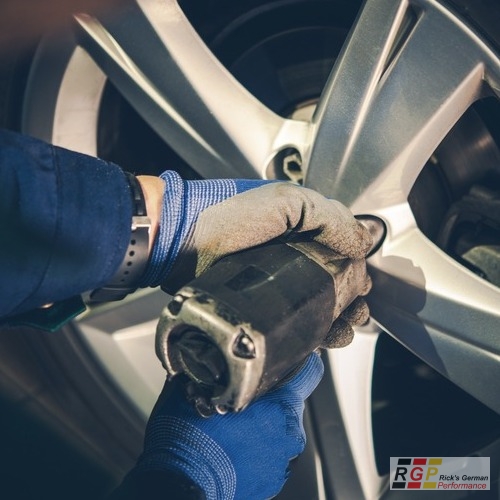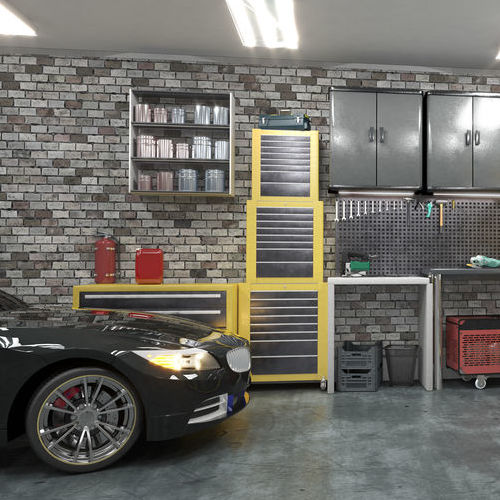
Tire Rotation Is Part of the Maintenance
If you’ll read your owner’s manual for your vehicle, you’ll find several tasks that should be completed for their recommended maintenance schedule. This includes an oil change, checking the coolant level, checking transmission fluid, all the lights, and the tire depth, tire pressure, and tire rotation.
Each of these tasks is recommended to be completed within specific mileage intervals. How often should tires be rotated? Tire rotation is usually between 5,000 miles and 7,500 miles, but do you know what tire rotation is and why it is needed? Read on for more information about this task.
What is a tire rotation?
In simple terms, tire rotation is the process of switching the front tires with the rear tires, not just back to front. This is also switching them in a crisscross pattern, depending on the vehicle’s drivetrain. For instance, for front-wheel drive, the rear tires are moved to the front and switched from side to side. The front tires, however, are moved to the back on the same side as they are on the front.
Why is tire rotation so important?
The drivetrain determines the tire rotation pattern wear and tear of the tires in mind. The tire rotation pattern is based on the following:
- The roadways today seem to either be under construction or need construction, no matter where you live. Tire rotation will ensure the tires are wearing out at an even rate all the way around.
- For a front-wheel-drive vehicle (FWD), the engine’s power is sitting on the front axle and wheels. This extra weight wears the front tires out quicker. And when it comes to a rear-wheel drive (RWD) vehicle, the opposite is true thus causing the rear tires to wear out faster.
How does tire rotation affect your driving experience?
There are several factors in play when it comes to how the tires wear out and tire rotation ensures the tire tread wears out evenly. Other benefits your driving experience will have include:
- Improved Road Traction: As tires wear out, they lose tread depth which reduces their traction on the road. This puts you, your passengers, and your car at a safety risk when the roads are icy, wet, and under other hazardous conditions. With routine tire rotation, the tire tread depth wears evenly so the tires have even traction on the roads.
- Blowout Prevention: As tires wear, they are more likely to have a blowout, which can result in losing control of the vehicle, creating a dangerous situation. With tire rotation, you can be sure that all 4 tires are wearing out evenly and safely.
- Better Ride Quality: How can tire rotation improve vehicle performance? When one tire wears out faster than the others, it will affect the quality of the ride. Getting a tire rotation as recommended will ensure a smooth drive and ride every time.
- Fuel Efficiency Maintained: Do tires affect the fuel efficiency of a vehicle? Absolutely! Even tread wear all the way around reduces any drag and engine strain, which helps with the vehicle’s fuel economy.
What are the risks if you don’t get a tire rotation done?
Well, without tire rotations as recommended by the vehicle manufacturer or your mechanic, the benefits we listed above are missed. A recap of what could happen without tire rotation includes:
- HEAT BUILDUP
As a vehicle move down the road, friction is created between the road and the tires, generating heat. While rubber tires are designed to withstand heat, the tread is important in providing a cool airflow to keep the tires from getting too hot, causing a blowout, tread shredding, or worse.
- HYDROPLANE
Healthy tire tread channels water away from the road surface, so the tires can have a firm grip. Without tire rotation, the tread depth is uneven and allows the tires to skim across any water over the roadway. This can compromise your control of the handling and steering of the car.
- TRACTION
Snow tires have improved traction on the road because the tread is deeper, sharper, and wider. Driving on ice or snow with poor tread depths puts you at risk of your vehicle going into an out-of-control spin.
- BLOWOUTS AND PUNCTURES
Without tire rotation, any worn spot on a tire will put more strain on the tire, the spot gets thinner, and running over something that is pointy or sharp can result in a blowout from a punctured tire.
Do all tires need to be rotated?
Yes, whether you have a 2-wheel, 4-wheel, or all-wheel drive train, every vehicle should have a tire rotation done according to the vehicle or tire manufacturer’s recommendations. If you purchase a used car and have no idea what the tire rotation should be, refer to your mechanic or tire store.

When Rubber Hits The Road: What are the signs that tires need to be rotated?
If you notice these three things with your vehicle, it is time to schedule a tire rotation:
- Uneven wear of the tread on one or more tires
- Uneven wear from the back to the front tires
- Your vehicle has a shimmy or vibrations
Need reliable tire rotation in Atascadero, CA? Set up a service appointment by calling 805-466-3236.
